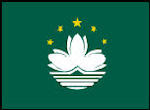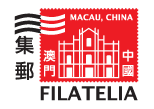Lok Cheong (1923-2006),
the former president of the Macau Artist Society, who staled his career as a
self-taught painter in theater. He was proficient in western painting, and then
became expert in traditional Chinese painting later.
As a native in Macao,
the works of Lok Clwong was fully brimming with local flavor. In his eyes,
Macao is serenity and vital. His painting surpasses the conventional thinking,
always blends in the local folk custom. In the early years, his artworks were
usually selected in the art exhibitions in Guangdong Province.
Especially, “Gravel road”, an aquarelle with strong feature of Macao, had earned him a special award of the 6 national art exhibitions in 1985.
Especially, “Gravel road”, an aquarelle with strong feature of Macao, had earned him a special award of the 6 national art exhibitions in 1985.
When National Day during
1960’s and 1970’s, the decorated archway standing erect around Macao, became
colorful and shining, and show off the strength of national construction and
culture. Especially the Largo do Senado and the Tiananmen Rostrum with grand
style and glorious design, has become the gathering place for tourist. In those
days, the decorated archway had become the characteristic of Macao, and was the
indelible collective memory of such generation in Macao.
Lok Cheong as the
coordinator of the design of the decorated archway for the National Day of
China in Macao, leaded a production team and friends to develop for several
years with innovation and unique style, finally got a great achievement. It happened
one year, the decorated archway collapsed on the eve of National Day due to
typhoon. Lok Cheong and his team spared no effort to make it rebuild again over
one night, and renewed vitality, which was a much-told story at that time.
Today many local painting leaders were steeped in the decorated archway.
A well-known saying by Zeng
Gongliang, in Song dynasty, was that: “To enjoy the surprising scenery of the
billows like giant silver mounts, you should push your windows open and take a
broad view of the great river. (It means that to evolve into great
achievements, one should take the initiative attitude to step out into the
world, to make progress, to find good things in the world and learn from
others.) Lok Cheong regards it as a model. As Macao is just a tiny place, the
development of art of painting should be connected with outside. Lok Cheong and
colleagues of Macau Artist Society initiated contact with the painting friends
or peer all over China, and promoting the flow of painting talent in the name
of art of painting. Its aim is showing prosperous and beautiful Macao. It
always keeps learning from each other all over China, and making mutual
progress and development of painting art.
Author Lok Pó
Translation: C&C - Translation Centre, Ltd.
Translation: C&C - Translation Centre, Ltd.
The Stamps:
The Sheetlet:
The Souvenir Sheet:
The FDC with Stamps:
The FDC with Souvenir
Sheet:
The Post Mark:
Dados Técnicos/Technical
Data
Valor dos Selos/Stamps
Value: stamps of 1.50, 2.50, 3.50 and 4.00 Patacas
Folha Miniatura com
quatro séries/Minisheet with four sets
Valor do Bloco/Souvenir
Sheet Value: 10.00 Patacas
Desenho/Design: Lok
Cheong (Adapt. Lok Chong)
Data emissão/Issue date:
21.09.2012
Impressor/Printer:
Cartor Security Printing, France
Impressão/Print: Offset
Lithography
Papel/Paper: Paper with
Security Fibers
Picotagem/Perforation: 13
x 13¼









































